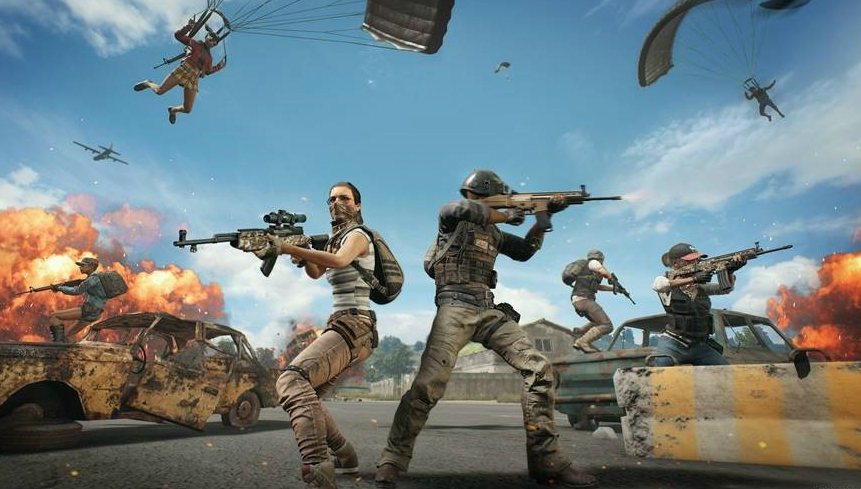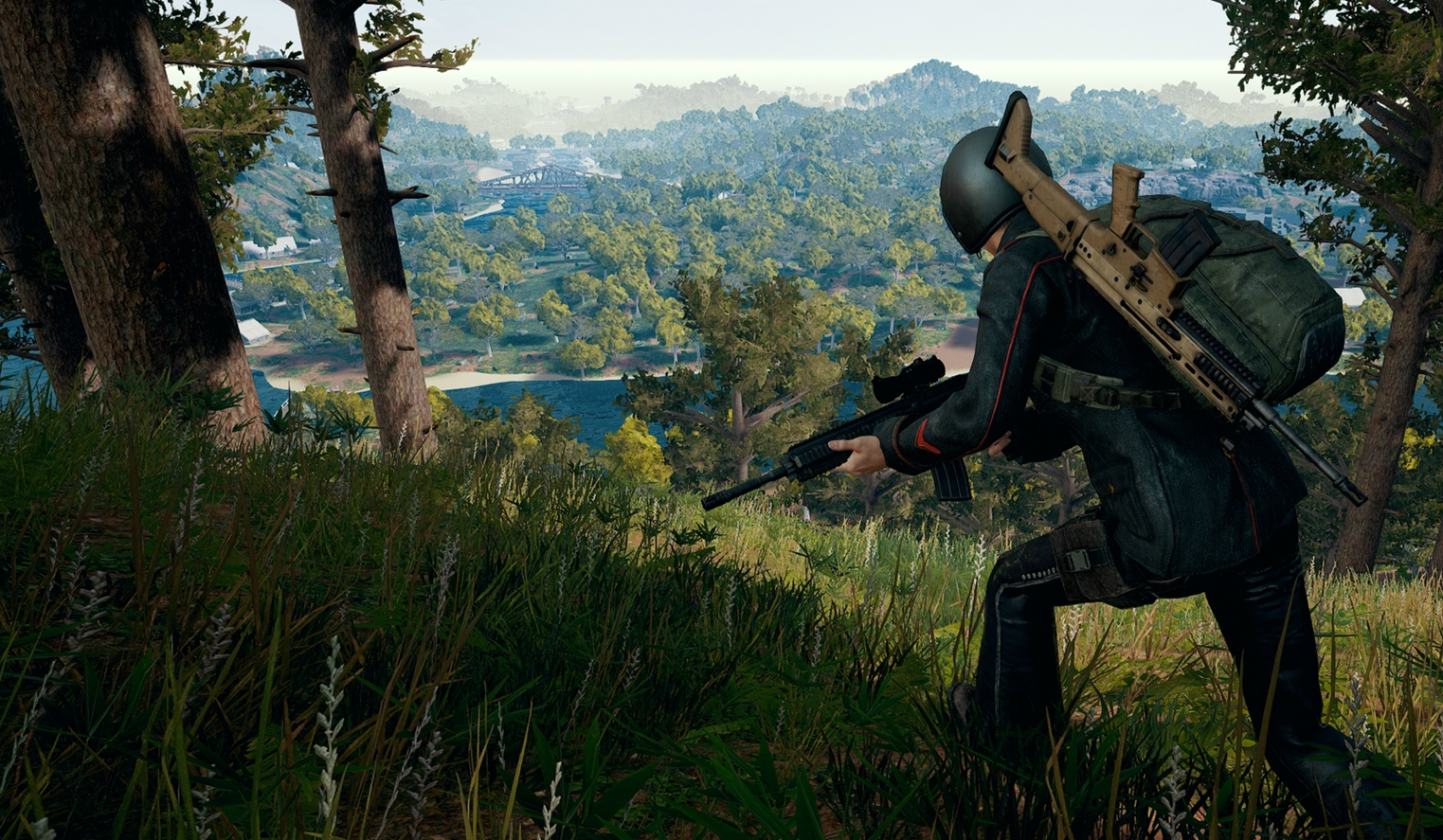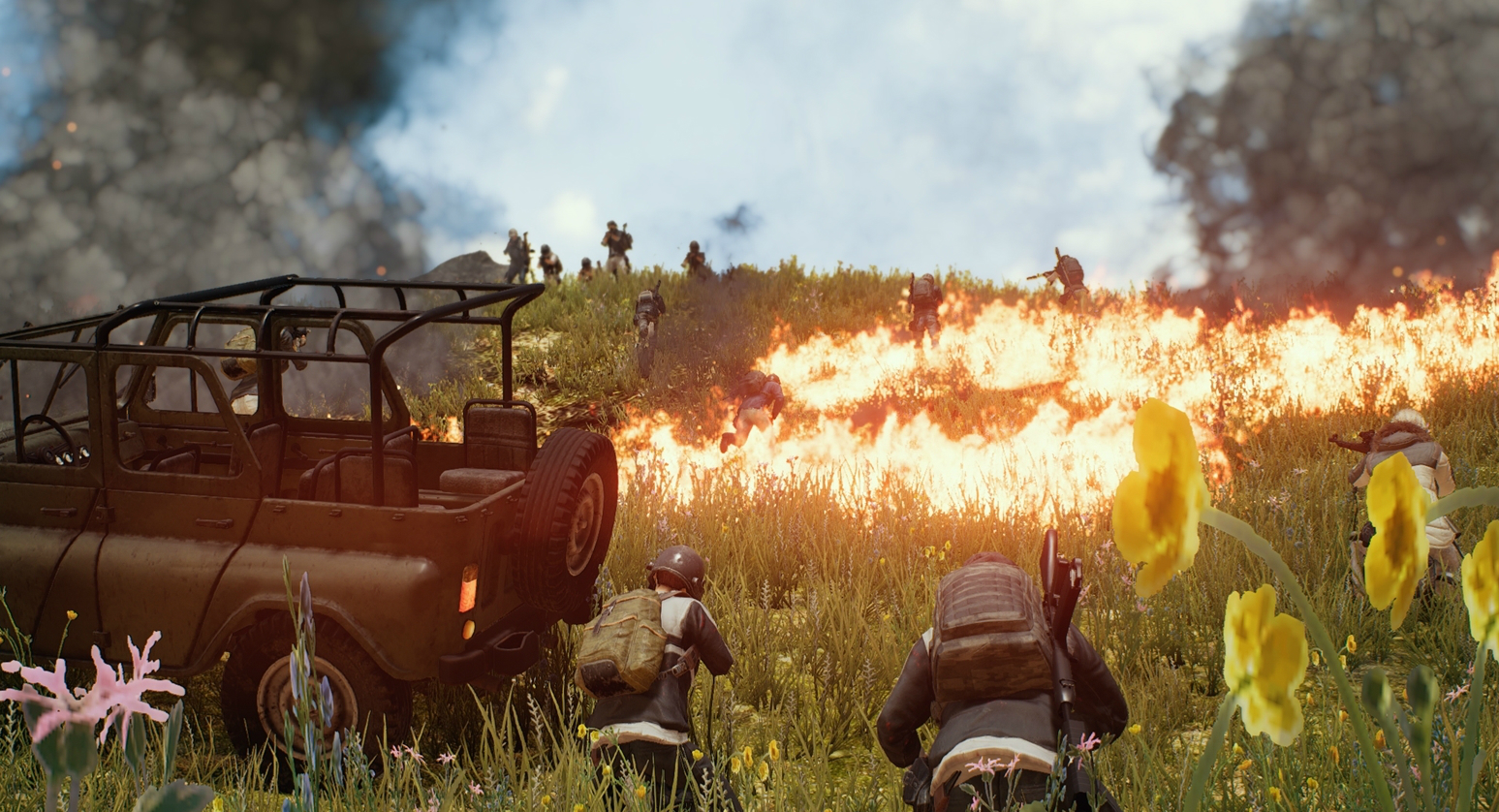Despite losing the spotlight to Fortnite, PUBG is still thriving in 2019
PlayerUnknown's Battlegrounds has long lost the spotlight to Fortnite, and yet it's still in the best shape of its life.

Before there was PlayerUnknown’s Battlegrounds, there were developer Brendan Greene’s battle royale-esque mods for games like ARMA 2. One of his most popular creations, DayZ: Battle Royale, was a mod built on top of another mod. His battle royale mode was a hit, but it didn't truly blow up until Korean developer Bluehole hired him to make PUBG, which set the record for the most simultaneous players on Steam with 3.2 million in January 2018. A long string of imitators followed, and now just a year or so later it's Fortnite, not PUBG, that dominates the news. PUBG's short reign already feels like a lifetime ago.
Instead of PUBG Corp. explaining what a battle royale is, players are now telling the developer what they want in the game. And what everyone wants is often different.
And yet it's still immensely popular. In December 2018, PUBG Corp. told The Verge that PUBG Mobile had more than 200 million users. For context, Fortnite, on all platforms, had the same number of users during that time. Despite Fortnite’s dominance in mainstream media, PUBG had been quietly keeping up, and even exceeding Fortnite’s player numbers. (And that number, according to The Verge, was excluding Chinese players, who have recently moved onto a PUBG dupe from Tencent called Game for Peace.) In June 2018, PUBG Corp said it had more than 400 million players, 227 million of which logged in monthly.
Despite those high numbers, the playerbase on PC has been declining consistently, according to SteamCharts. But it's still in the top three every day, right behind Dota 2 and CS:GO. From a population perspective, PUBG is still thriving.
“In the beginning, we spent all our time explaining what battle royale was,” PUBG Corp. studio director Brian Corrigan said. “It definitely hasn’t happened without some growing pains, but it’s been really amazing to see PUBG go from being the first major battle royale game to an established game in the market.”
When the battle royale genre was new, players didn’t know what to expect. The early access banner helped quell expectations, but that’s changed now. Player expectations are higher, Corrigan said—instead of PUBG Corp. explaining what a battle royale is, players are telling the developer what they want in the game. And what everyone wants is often different.

A PUBG for everyone
Streamers and content creators want a game that’ll guarantee entertaining footage. “We currently have four major areas to explore, lots of different vehicles and weapons to play with, and a custom match mode that lets streamers [and] content creators get up to all kinds of mischief and mayhem,” Corrigan added.
Competitive players in one of PUBG’s official leagues want a game that’s balanced, focused on skill rather than pure, random chaos. PUBG Corp. has to figure out how to adjust the game to meet everyone’s needs.
Keep up to date with the most important stories and the best deals, as picked by the PC Gamer team.
Generally, players on Reddit are pretty happy with Battlegrounds—and honestly, that’s shocking given the complaining you'll find on a typical subreddit.
Thread after thread on the PUBG subreddit questions the state of PUBG, to largely positive responses. Just last week, I saw replies that the game is in its “best shape,” with a Reddit user reporting that “a lot of streamers share this thought, too.” (PUBG is the second-most watched battle royale game on Twitch right now, hovering at 23,000 viewers at the time of writing. Fortnite, naturally, is in the top slot with 163,000 viewers.)
PUBG has seen some dramatic changes in the past year to get where it is now. Last year it introduced the Survivor Pass (previously called the Event Pass) as PUBG’s progression system. Like with Fortnite’s Battle Pass, the Survivor Pass rewards players for completing missions and reaching milestones.

Others on Reddit cite PUBG’s stability as Apex Legends’ popularity wanes. “Apex has its own five minutes. Same thing was with [Call of Duty: Blackout] and where is it now? Fortnite is already back on top while PUBG stays untouched,” another user wrote. “[They’re] different types of games.” People are drawn to PUBG for its more realistic and tactical gunplay. It's not as fast as Apex or as wild as Fortnite, but that's the whole point.
“PUBG is a completely new game from when we first played it,” said Richard Simms, PUBG caster and ESL’s head of talent. “While not to everyone’s taste, the new maps and Survivor Passes add a nice mix of fun and casual grinding to the game away from the hardcore competitive nature of PUBG. It’s just not the same game, and for all the right reasons.”
Indeed, there are multiple new maps in PUBG, for a total of four: Erangel, Miramar, Vikendi, and Sanhok. All of the new maps add something different, but Sanhok really changes things. It’s really small, half the size of the other maps. It also uses a “dynamic circle,” which can analyze how many players are left alive and taper its movement to that. If a bunch of players have been killed in the early game, the blue zone will speed up, removing some of the lag time that can happen in battle royale. Instead of just being reskinned versions of the same experience, the maps can determine how a game will play.
“Our experience is really unique and we’re OK with that,” Corrigan said. “Being good at PUBG requires a unique combination of technical skills, situational experience, and dogged persistence. There are a lot of ways we could change the game to make it more approachable, but that’s not the story we want to tell and it’s just not the soul of the game. We look at PUBG as sometimes unforgiving, hard but not hardcore, with a weird mix of silly and strange things thrown in to keep it interesting.”
Cheating and esports growth
The thing that PUBG Corp. is still struggling with is cheating. A reported 13 million PUBG accounts have been banned since mid-2017. Fifteen people were arrested in April 2018 for creating cheating programs. And earlier this year, ahead of the launch of the new PUBG leagues, a bunch of competitive players had their accounts suspended and were banned from event participation for cheating during qualification matches. Bold.
The biggest journey PUBG has had to undergo is finding out how to tackle [battle royale] as an esport.
Richard Simms
PUBG Corp. is grappling with it. In February, the developer outlined its anti-cheat program, which is part of the developer’s larger campaign to “fix PUBG.”
Corrigan declined to share PUBG’s daily active numbers, but he said the game is maintaining a healthy player base that’s still growing. “The market is more mature now, so we’re obviously not expecting to experience the meteoric rise we saw in 2017,” he said.
A large part of PUBG’s sustainability can be tied to its competitive structure, which launched in full in 2019. PUBG esports span a number of different pro-level events across nine regions, including North America, which hosts the National PUBG League from a specially-built studio in California. Director of esports Jake Sin said that the 10-month competitive period is designed for consistency and stability.
That requires keeping players and the audience invested in the future of PUBG. With the nine leagues, fans have a consistent schedule of games to watch. “The league system is easier for the fans to follow and understand, as opposed to a series of short-term tournaments,” Sin said. “Local leagues can foster the growth of local fandom and loyalty for their own leagues and heroes.”
The big thing here is that PUBG Corp. is invested in its teams with a revenue sharing program. This makes PUBG a little more stable for participating teams, but only for some of them; teams in the North American PUBG League and the PUBG Europe League benefit from the program, but the other leagues haven’t been added yet. Twenty-five percent of sales of league-branded items go to the league teams, and PUBG Corp. also helps teams pay for travel and housing, if needed.
“The biggest journey PUBG has had to undergo is finding out how to tackle [battle royale] as an esport,” Simms said. “By nature, [battle royales] have a heavy element of random influence… but PUBG has introduced rulesets and settings which mitigate a certain amount of RNG and make it more manageable. That, alongside learning how to best present to an audience a 64-player game by the use of a map stream and new observation tools, the [battle royale] genre isn’t a simple team vs. team show. It’s a story.”
In the era of games-as-a-service, players and fans are expecting games and leagues to evolve on the fly, and that pressure can be relentless. PUBG Corp. knows this, and Corrigan said the team has added a lot of support staff to scale up for the game’s popularity. Last year was “hiring mode” for the developer, and this year players are beginning to see the fruits of that labor. PUBG's designers certainly aren't sitting still.
Corrigan said PUBG’s progression system, weapon mastery, which was added this year, will continue to change and evolve in 2019. “Looking further ahead, players are going to see more content, changes to current systems, and more support for our esports and competitive players,” Corrigan added. “On top of that, we’re continuing to make changes to our core engine and working to make the experience smoother.”

